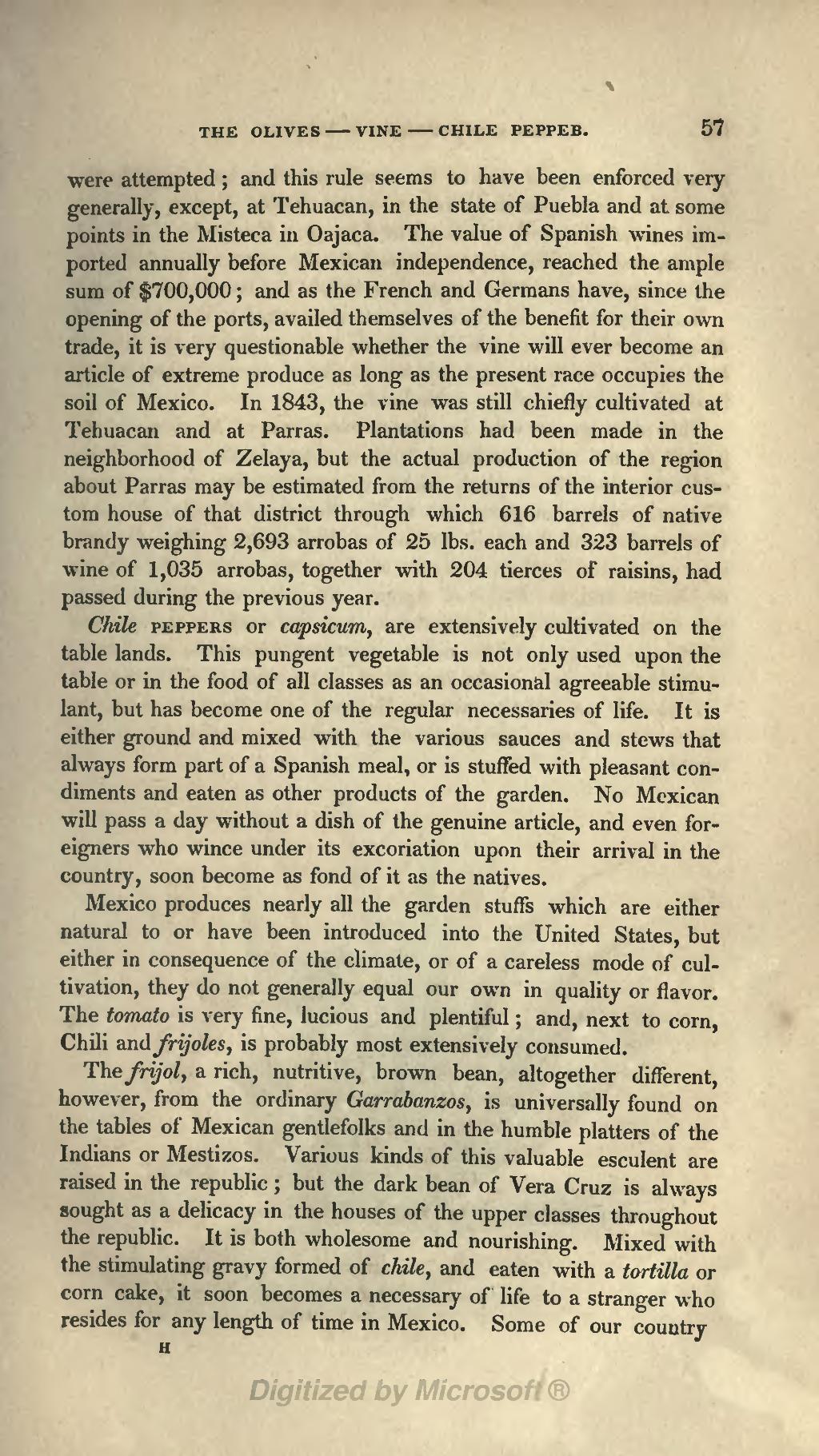were attempted; and this rule seems to have been enforced very generally, except, at Tehuacan, in the state of Puebla and at some points in the Misteca in Oajaca. The value of Spanish wines imported annually before Mexican independence, reached the ample sum of $700,000; and as the French and Germans have, since the opening of the ports, availed themselves of the benefit for their own trade, it is very questionable whether the vine will ever become an article of extreme produce as long as the present race occupies the soil of Mexico. In 1843, the vine was still chiefly cultivated at Tehuacan and at Parras. Plantations had been made in the neighborhood of Zelaya, but the actual production of the region about Parras may be estimated from the returns of the interior custom house of that district through which 616 barrels of native brandy weighing 2,693 arrobas of 25 lbs. each and 323 barrels of wine of 1,035 arrobas, together with 204 tierces of raisins, had passed during the previous year.
Chile peppers or capsicum, are extensively cultivated on the table lands. This pungent vegetable is not only used upon the table or in the food of all classes as an occasional agreeable stimulant, but has become one of the regular necessaries of life. It is either ground and mixed with the various sauces and stews that always form part of a Spanish meal, or is stuffed with pleasant condiments and eaten as other products of the garden. No Mexican will pass a day without a dish of the genuine article, and even foreigners who wince under its excoriation upon their arrival in the country, soon become as fond of it as the natives.
Mexico produces nearly all the garden stuffs which are either natural to or have been introduced into the United States, but either in consequence of the climate, or of a careless mode of cultivation, they do not generally equal our own in quality or flavor. The tomato is very fine, lucious and plentiful; and, next to corn, Chili and frijoles, is probably most extensively consumed.
The frijol, a rich, nutritive, brown bean, altogether different, however, from the ordinary Garrabanzos, is universally found on the tables of Mexican gentlefolks and in the humble platters of the Indians or Mestizos. Various kinds of this valuable esculent are raised in the republic; but the dark bean of Vera Cruz is always sought as a delicacy in the houses of the upper classes throughout the republic. It is both wholesome and nourishing. Mixed with the stimulating gravy formed of chile, and eaten with a tortilla or corn cake, it soon becomes a necessary of life to a stranger who resides for any length of time in Mexico. Some of our country
